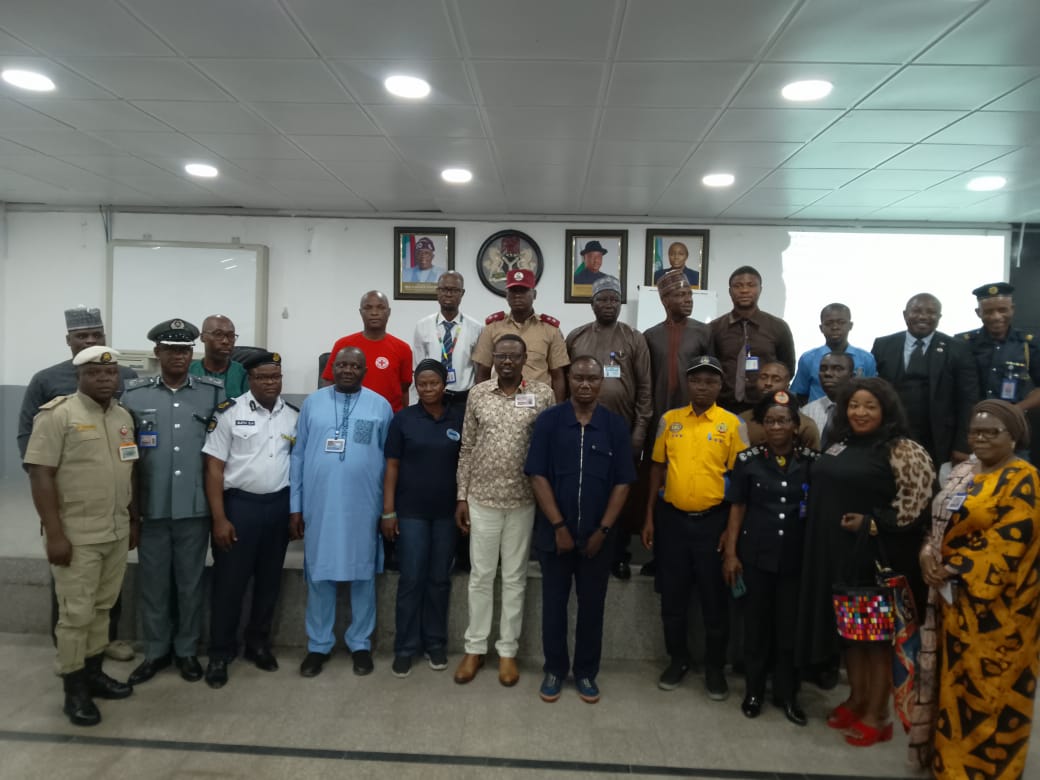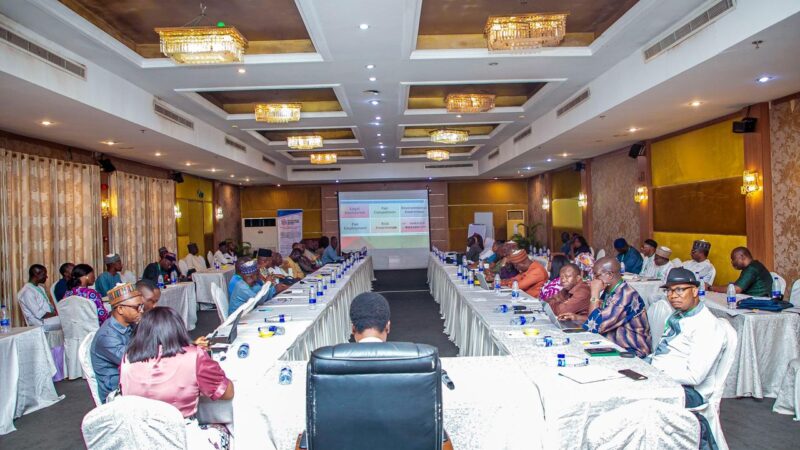NAMA Rallies Stakeholders for Emergency Preparedness with Aircraft Rescue Simulation at Lagos Airport

…“Search and Rescue is Everybody’s Business,” Say Experts at MMIA
The Nigerian Airspace Management Agency (NAMA) on Tuesday, 17 June 2025, conducted a comprehensive Aircraft Emergency Tabletop Exercise at the Murtala Muhammed International Airport (MMIA), Lagos, a bold step aimed at bolstering Nigeria’s aviation safety preparedness.
The exercise, held at the airport’s Conference Centre, brought together a cross-section of critical emergency and aviation stakeholders.
Participants included representatives from aviation agencies, the Nigeria Customs Service (NCS), Nigeria Immigration Service (NIS), Department of State Services (DSS), Federal Road Safety Corps (FRSC), Federal Fire Service (FFS), National Emergency Management Agency (NEMA), Lagos State Emergency Management Agency (LASEMA), Airline Operators of Nigeria (AON), Lagos State Ambulance Services (LASAMBUS), Nigerian Police Force (NPF), and other key entities involved in aeronautical emergency response.
Declaring the exercise open, the Director of Air Traffic Services at NAMA, Mr John Tayo, emphasised the significance of collaborative preparedness in managing aircraft disasters. Represented by the General Manager, Search and Rescue (SAR), Mr Sunday Iwalaiye, Tayo urged participants to approach the event with seriousness and commitment.
“This morning, we are going to combine two things. To get fruitful results, we want to separate the stakeholders’ meeting from the aircraft emergency exercise,” he said. “Search and Rescue is everybody’s business.”
The tabletop exercise was strategically divided into two interactive sessions — “Search and Rescue Units and Responsibilities” and “Arrangement Into Groups of Search and Rescue Units According to Their Responsibilities”.
According to Iwalaiye, understanding each agency’s role is fundamental to a coordinated emergency response. “We cannot start the exercise without knowing clearly the responsibilities of each agency. Any search and rescue involving an aircraft is an aeronautical emergency,” he stated.
Regional General Manager, South West for the Federal Airports Authority of Nigeria (FAAN), Mr Olatokunbo Arewa, commended the initiative, urging stakeholders to give it their full support.
“This is a thing we should all support. Although no one wants emergencies to happen, they do occur. I want all stakeholders to take note of what is discussed here to know what to do when emergencies arise.”
Also lending his voice, Alhaji Safo Baba Jiya, representing the Nigeria Civil Aviation Authority (NCAA), reiterated the paramount importance of safety in aviation. “Safety is paramount for us at NCAA. We are here to learn. Let us be mindful of what we are doing here today,” he urged.
In a similar vein, Mr Onohwoakpo Chris, Quality Assurance Manager (QAM) at MMIA, acknowledged that while emergencies are undesirable, knowledge is essential. “We gathered here to learn about what we hope never happens in aviation,” he noted.
Mrs Ibitayo Adenike, Head of NEMA’s Search and Rescue Unit, Lagos Operations, praised the comprehensive nature of the exercise. “The last global aviation disaster wasn’t expected. We have representatives of practically all airlines here. Let us synergise, identify shortcomings, and improve so we can act appropriately when the need arises,” she advised.
For Engineer Jamin Olayinka Salami of LASEMA, the exercise should not be a one-off. “This is something we need to do often,” he said, while also stressing the importance of disaster prevention alongside response.
Providing a deeper perspective, Search Mission Coordinator at MMIA, Mr Igberaese David, explained that the collaboration with agencies like NEMA and NIMASA was aimed at enhancing synergy during real-life emergencies. “Our goal is rescuing the greatest number of people in the shortest possible time,” he said.
Quoting the International Civil Aviation Organisation (ICAO), he stressed that “a 24-hour watch must be maintained for Search and Rescue operations.” He added: “When an aircraft crashes in remote areas, farmers and local residents often become the first responders. That’s why Search and Rescue is everybody’s business.”
The high point of the event was a live activation and demonstration of a Search and Rescue scenario, simulating an aircraft emergency. The operation was successfully executed and concluded with a debriefing session to reflect on the lessons learned and assess readiness.
Tuesday’s exercise served as a powerful reminder of the unpredictable nature of aviation incidents and the critical importance of inter-agency coordination in safeguarding lives.







